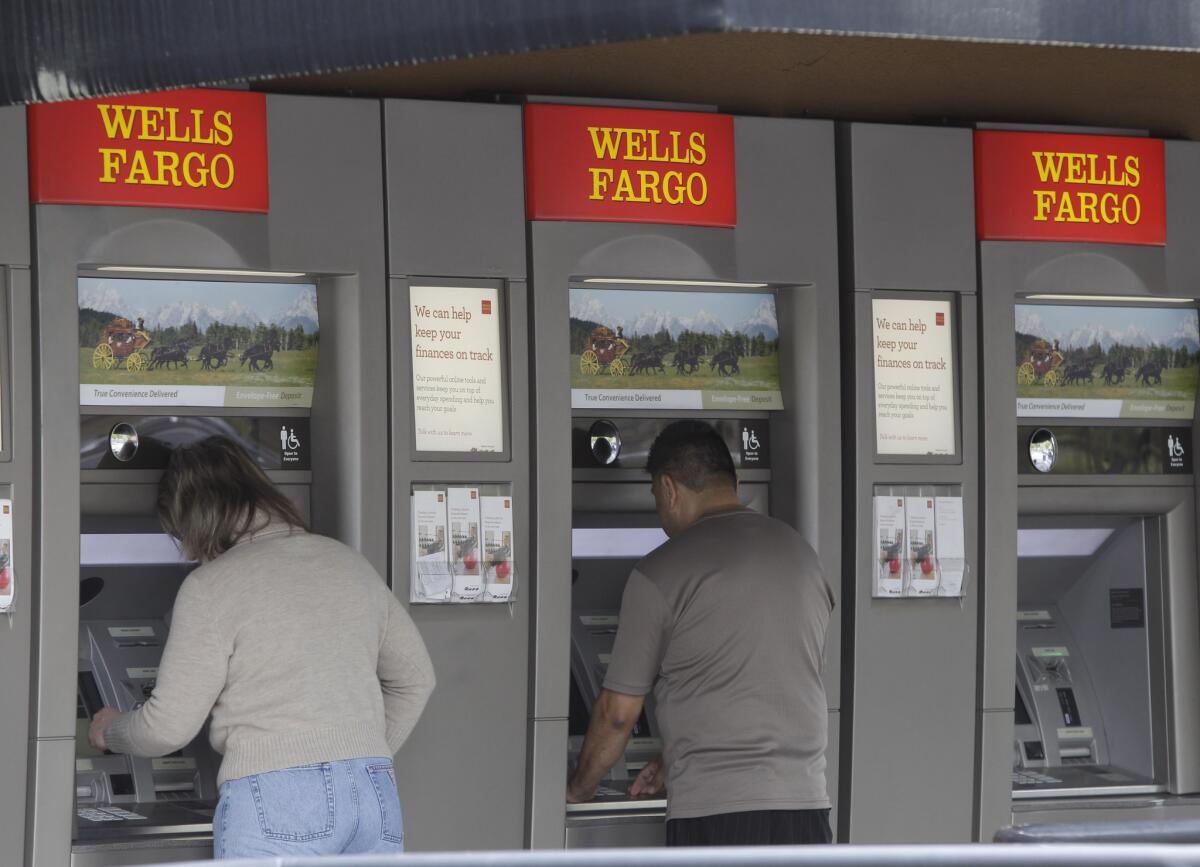5 big banks fail to make good plans in case of crisis. What does that mean?

Wells Fargo, JPMorgan Chase, Bank of America, Bank of New York Mellon and State Street do not have sufficiently good “living wills,” regulators said Wednesday.
- Share via
Five of the nation’s largest banks don’t have good enough plans for how they would exit a future bankruptcy without leaving taxpayers on the hook, federal regulators announced Wednesday.
Here’s a look at what that means and where it leaves you.
Why do banks need these plans?
In the wake of the 2008 financial crisis and bank bailout, regulators required each of the nation’s largest banks to submit a “living will”: a set of plans for a rapid and orderly exit from bankruptcy.
The goal is to prevent another situation in which taxpayers would have to bail out financial institutions to keep the economy afloat. Regulators also want to end the marketplace perception that the government would step in and rescue banks again.
See the most-read stories this hour >>
Which banks failed to make good plans?
Bank of America, Bank of New York Mellon, JP Morgan Chase, State Street and Wells Fargo have living wills that are deficient and are either “not credible or would not facilitate an orderly resolution” under bankruptcy, the Federal Deposit Insurance Corp. and the Federal Reserve Board said.
Does this mean my bank is in trouble?
No. The big banks are in strong financial shape and are facing no threat of collapse. They sit on sturdy bases of capital that the regulators ordered them to shore up in recent years. The banking industry as a whole has recovered steadily since the financial crisis.
“The capital levels for these banks are at multi-decade highs,” said Kevin J. Barker, a senior research analyst at Piper Jaffray & Co.
What happens next?
The five banks must fix problems in their living wills by Oct. 1.
If they do not, then regulators could take several actions. Those include restricting the banks’ growth and requiring the banks to put aside more money as a cushion against failure.
“There is no immediate impact from this morning’s announcement,” Jaret Seiberg, an analyst with Guggenheim Partners, said in a note to clients.
SIGN UP for the free California Inc. business newsletter >>
If the banks still don’t fix their deficiencies two years after regulators impose such requirements, the government could force the firms to divest certain assets.
But Seiberg said it’s likely the problems will be resolved long before then.
“Our initial view is that the issues outlined for the failing living will banks are all fixable,” he told clients. “We see nothing in our initial scan of the materials that suggests these banks will fail when they resubmit on Oct. 1.”
Were any other banks dinged Wednesday?
Yes. Regulators also found weakness and shortcomings in the living wills of Goldman Sachs, Morgan Stanley and Citigroup, but not enough to require them to fix their issues by October.
The Associated Press was used in compiling this report.
ALSO
How Disney used shell companies to start its Magic Kingdom
Chinese investors pour more money into U.S. businesses than ever before
Southern California apartment rents are expected to keep rising through 2018
Inside the business of entertainment
The Wide Shot brings you news, analysis and insights on everything from streaming wars to production — and what it all means for the future.
You may occasionally receive promotional content from the Los Angeles Times.








